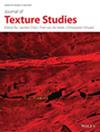How Do Thick Purees Perform in Terms of Safety and Efficacy in Hospitalized Patients With Swallowing Impairments?
Abstract
Background: The therapeutic effect and optimal rheological properties of thick purees for hospitalized patients with oropharyngeal dysphagia (OD) have not yet been settled. Objectives: The objectives of this study were to (a) Quantify the rheological properties of 6 thick purees Texture C, BDA; (b) Determine the biomechanics of oral processing and its effect on the rheological properties; (c) Evaluate the safety and efficacy of swallowing the purees in patients with OD. Methods: Six pureed dishes (30 g) were given to 20 patients with OD aged 84 ± 7.2 years. Oral processing was measured using electromyography. Rheological and textural properties were analyzed before and after oral processing using a rheometer and texture analyzer. The safety and efficacy of swallowing were evaluated using the Volume-Viscosity Swallow Test (V-VST). Results: All dishes met Texture C BDA. Basal shear viscosity at 50s-1 ranged from 1200 to 2200 mPa·s; maximum force, 0.47–0.67 N; cohesiveness, 0.73–0.82; and adhesiveness, 0.77–1.1 N·s. Oral processing reduced shear viscosity and maximum force without altering cohesiveness. To achieve bolus ready-to-swallow, 17–20 mastication cycles (MC) and 15–22 s at 0.98–1.44 MC/S frequency were needed. All purees were significantly safer to swallow (98%–100%) compared to thin liquids (87%) (p < 0.001) and 250 mPa·s nectar fluids (94% p < 0.008). Oral residue prevalence increased to 28% and pharyngeal residue to 21% for purees. Palatability resulted in 40%–60% liking all dishes. Conclusion:This study shows that thick purees within a viscosity range of 1200–2200 mPa·s are a safe treatment for nutritional support for most hospitalized older patients with oropharyngeal dysphagia.

 求助内容:
求助内容: 应助结果提醒方式:
应助结果提醒方式:


